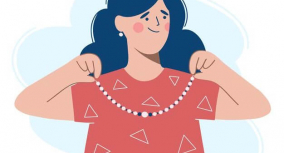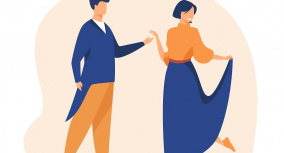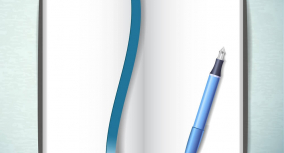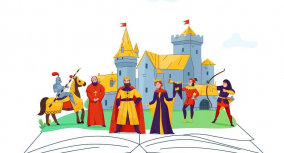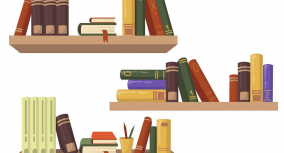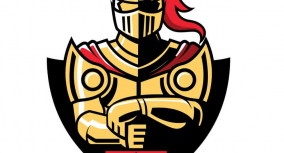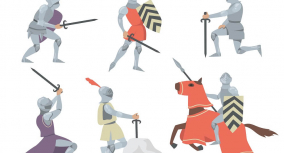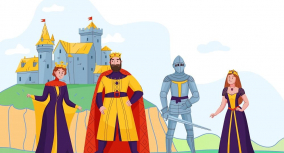“The Necklace” symbolism aims to highlight the story’s main themes, such as wealth, vanity, and materialism. The most important symbol in “The Necklace” by Guy de Maupassant is the necklace itself, which ruins the life of Mathilde Loisel, the story’s main character. After losing the borrowed piece of jewelry, she spends a decade working to repay it, only to learn in the end that it was fake.
Apart from the necklace, symbols in the story include the mirror, the wraps, and the cab. If you want to explore them further or need a more detailed analysis of what the necklace symbolizes in “The Necklace,” read on!
Symbols in The Necklace: Overview
Guy de Maupassant is a masterful writer when it comes to using symbols. Symbols to him are the tools that he uses to reveal his ideas on a deeper level. In the case of “The Necklace,” symbols are carefully chosen to reveal Mathilde’s personality and struggles.

In the short story, there are several important symbols:
What Does the Necklace Symbolize in The Necklace?
The necklace in the story symbolizes the idea that looks can be deceiving. Madame Loisel borrows it from Madame Forestier. Since it’s beautiful and looks expensive, Mathilde cannot even tell the real value of that piece of jewelry. From her perspective, an expensive-looking necklace is the embodiment of social status and class.
Mathilde borrows it to appear as someone she’s not. She is confident that an expensive piece of jewelry will bring her closer to a higher society.
Mathilde’s objects of desire are wealth and recognition. In that case, the necklace can undoubtedly represent the wealth in the story—showy but fake. The connection between wealth and appearance can tell a lot. Madame Loisel is not satisfied with the way her apartment or clothes look. The borrowed necklace is elegant, and it gives the perfect opportunity to be the woman she wants, at least for one night. Unfortunately, that’s all it is—a fancy exterior with nothing underneath.
Her friend, Madame Forestier, hides the real value of the necklace. It might be because she doesn’t care about the value of the jewelry. Or because she wants to be perceived as more prosperous than she is. In either case, Mathilde ruins her reasonably comfortable life for a piece of jewelry that isn’t worth it.
Additionally, the necklace symbolizes Mathilde herself. Just as women in the 19th century, it is an accessory. It does not perform any other function except as being visually pleasing and giving luxury to the owner. Just as much as the necklace, Mathilde only looks as she belongs to a prosperous society. Even though she deceives everyone at the party with her looks and flashy necklace, she’s still not wealthy. In reality, the diamonds are fake, and Mathilde is part of the middle-class.
The necklace gets lost at the ball. Subsequently, the protagonist loses her hopes for a better life and her comfortable present life. That is the conflict of the story. When replacing the necklace, Mathilde approaches the harsh reality for the next ten years.
The fact that the borrowed necklace turned out to be fake has a moral meaning to it. Wealth, or a broader concept, appearance, can be deceiving and false. It is essential to be that person, rather than pretend to be the person you’re not. That is also linked to the dangers of female beauty, as the appearance can conceal an ugly personality.
Quotes about the Necklace
Suddenly she discovered, in a black satin case, a superb diamond necklace; her heart began to beat covetously. Her hands trembled as she lifted it. She fastened it round her neck, upon her high dress, and remained in ecstasy at sight of herself.
The Necklace, Narrator
She was the prettiest woman present, elegant, graceful, smiling, and quite above herself with happiness. All the men stared at her, inquired her name, and asked to be introduced to her.
The Necklace, Narrator
In a shop at the Palais-Royal they found a string of diamonds which seemed to them exactly like the one they were looking for. It was worth forty thousand francs.
The Necklace, Narrator
Oh, my poor Mathilde! But mine was imitation. It was worth at the very most five hundred francs! . . .
The Necklace, Madame Forestier
Mirror
Another example of symbolism in “The Necklace” is the mirror. It reveals Matilda’s vanity and how vital her appearance is to her.
The mirror plays an indispensable role in the story twice. One of the rare moments in the story when Mathilde feels happy is when she admires herself in the mirror wearing the necklace. She looks more luxurious than usual and outwardly matches the status she dreams of. The mirror serves as the warning when she sees herself with diamonds on. It shows that physical appearance is flat and has nothing underneath it, much like the reflection does.
The second time she looks in the mirror, the reflection shows that the necklace is gone. It got lost as fantasies about a better life and her current contempt life.
In the beginning, the necklace presents Mathilde with a perfect life story she has always dreamt of. Yet, the second time she looks in the mirror, it demonstrates the sad reality. The mirror is the symbol of how Mathilde’s wealth and status are an illusion. The second time she sees her reflection, the necklace disappears as if by magic.
Quotes about the Mirror
She placed it on her throat, against her high-necked dress, and remained ecstatic in front of her reflection.
The Necklace, Narrator
She danced madly, ecstatically, drunk with pleasure, with no thought for anything, in the triumph of her beauty, in the pride of her success, in a cloud of happiness made up of this universal homage and admiration, of the desires she had aroused, of the completeness of a victory so dear to her feminine heart.
The Necklace, Narrator
She took off the garments in which she had wrapped her shoulders, so as to see herself in all her glory before the mirror. But suddenly she uttered a cry. The necklace was no longer round her neck!
The Necklace, Narrator
Madame Loisel looked old now. She had become like all the other strong, hard, coarse women of poor households.
The Necklace, Narrator
Symbolism in The Necklace by Guy de Maupassant: Other Examples
Dress Symbolism in The Necklace
The dress is a symbol that highlights Mathilde’s narcissism. It’s especially evident when she buys it for attending a party and becomes obsessed with her looks. Mathilde doesn’t notice anything apart from her reflection in the mirror – a perfect combination of the expensive dress and borrowed necklace. It is everything she was dreaming about.
Moreover, she neglects the needs of others. For instance, the dress was bought with her husband’s money, which he was saving for something else. It is yet another evidence of how self-absorbed the main character is.
Wraps Imagery in The Necklace
The wraps are a piece of garment that is meant to keep you warm. They represent a few different things in “The Necklace”:
- The wraps symbolize Mathilde’s simple life that she tries to escape throughout the story. Compared to the other ladies from her social circle, the wraps point at her lower status. She decides to take them off, which highlights how worried she is about her appearance.
- The wraps also symbolize the level of life her husband provides as he couldn’t afford more expensive garments. This interpretation is also related to the story’s idea of social inequality.
Symbols in The Necklace: The Cab
The old cab that Mathilde and her husband take reflects their shabby life. Just like the state of that car, their life situation is far from being luxurious – they are ashamed to display it.
Mathilde doesn’t even realize it, but after she loses the necklace, her life descends into darkness. It can be compared to how the cab the couple takes fades and disappears before they know it. Similarly, the cab can also be interpreted as the vehicle that carries them to another stage of their life.
Symbolism in The Necklace: Rue des Martyrs
Rue des Martyrs is the name of the street Mathilde lives on. It happens to be another symbol of her miserable life.
The name translates as “the street of the martyrs,” which hints at two meanings:
- Resembling the religious martyrs, Mathilde goes through the death of her past life when she loses the necklace. Now, she is truly a victim of the circumstances.
- At the same time, martyrdom can be a symbol of acceptance. Mathilde finally acknoledges her fate and puts all her effort into paying for what she desires the most.
Now, you know everything about the most important themes of the short story “The Necklace.” Feel free to come back here when you need to refresh any specific details in your memory. And if you need inspiration for an essay about the story, check out our list of “The Necklace” topics.

